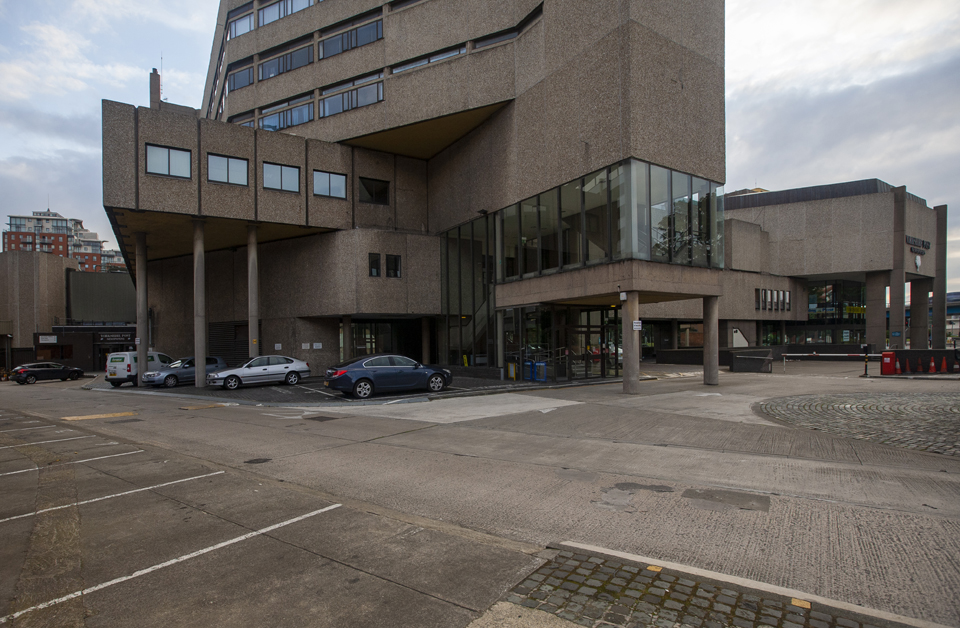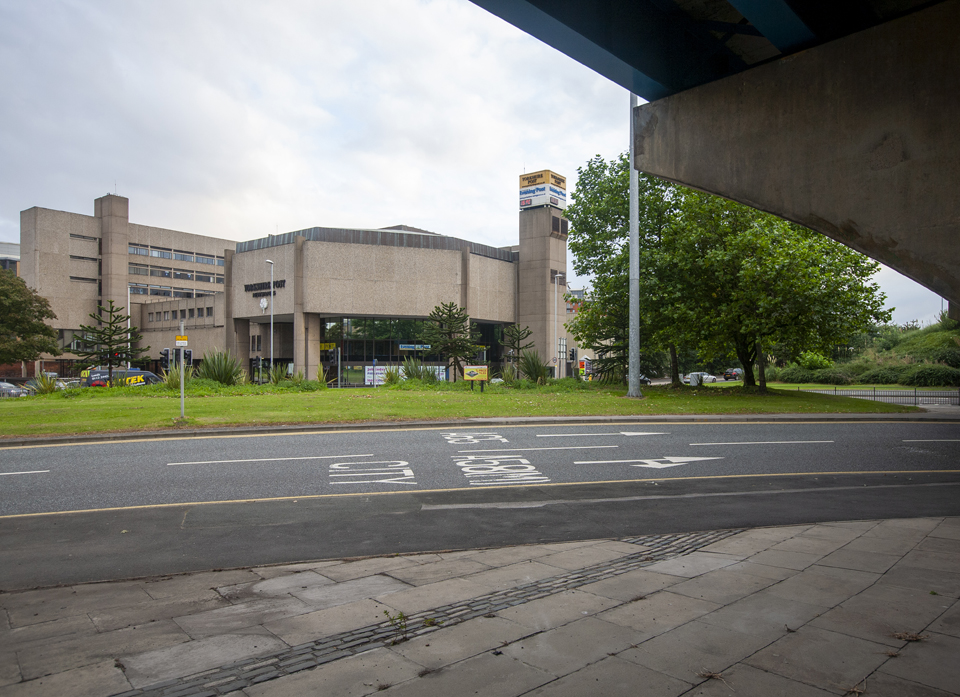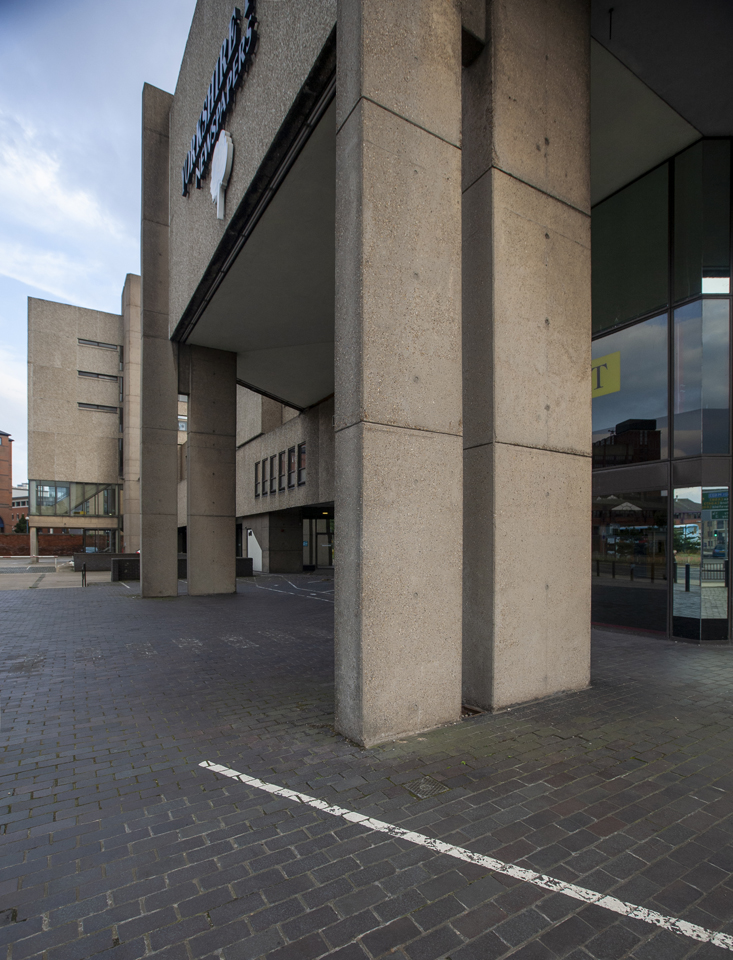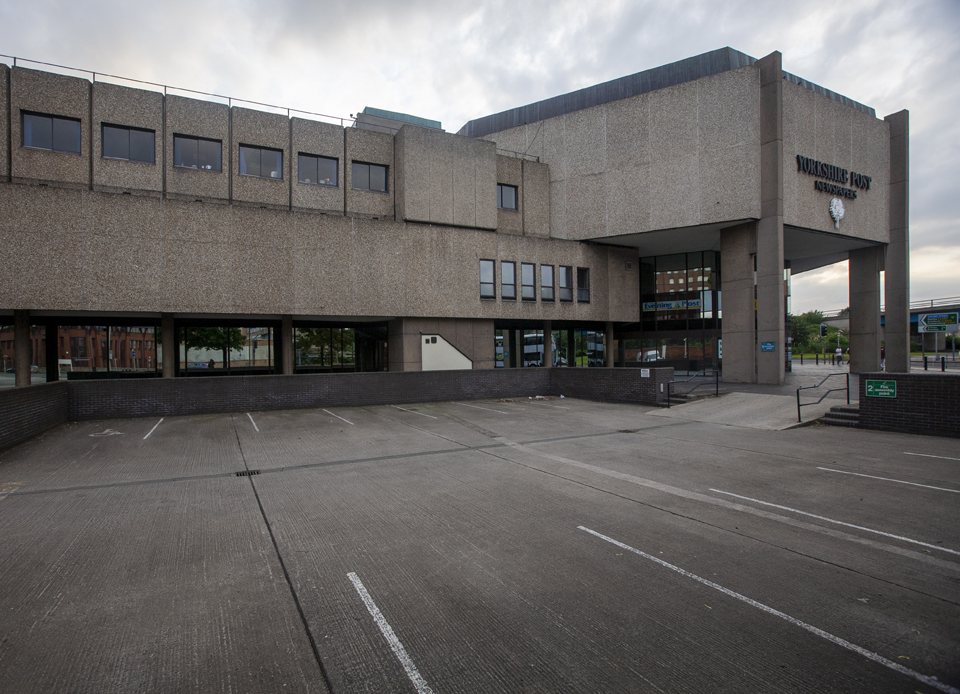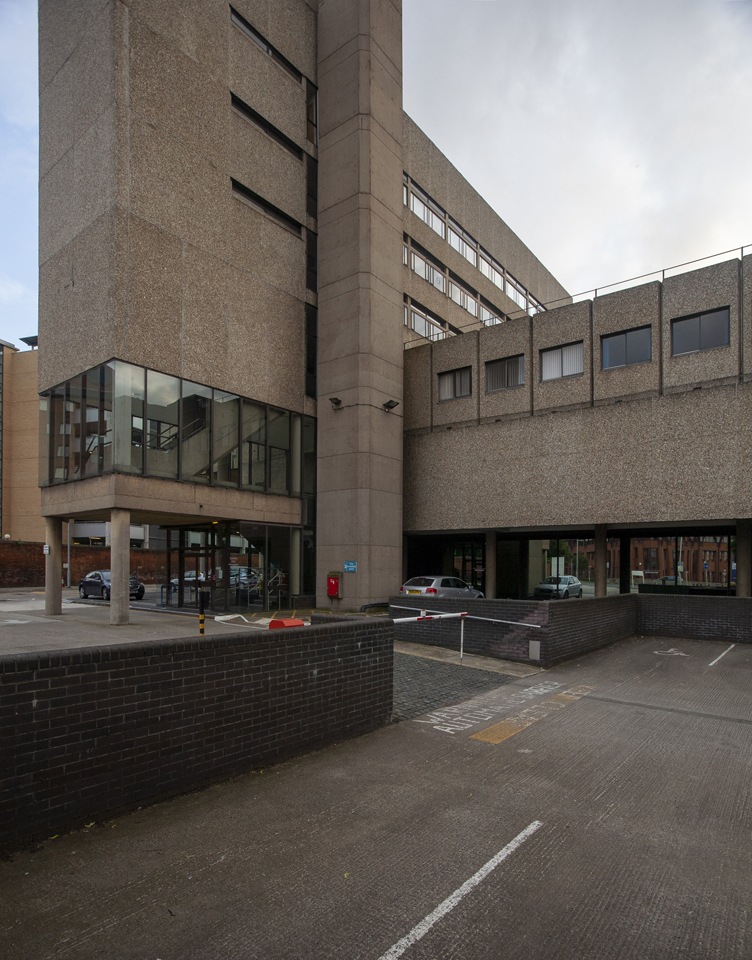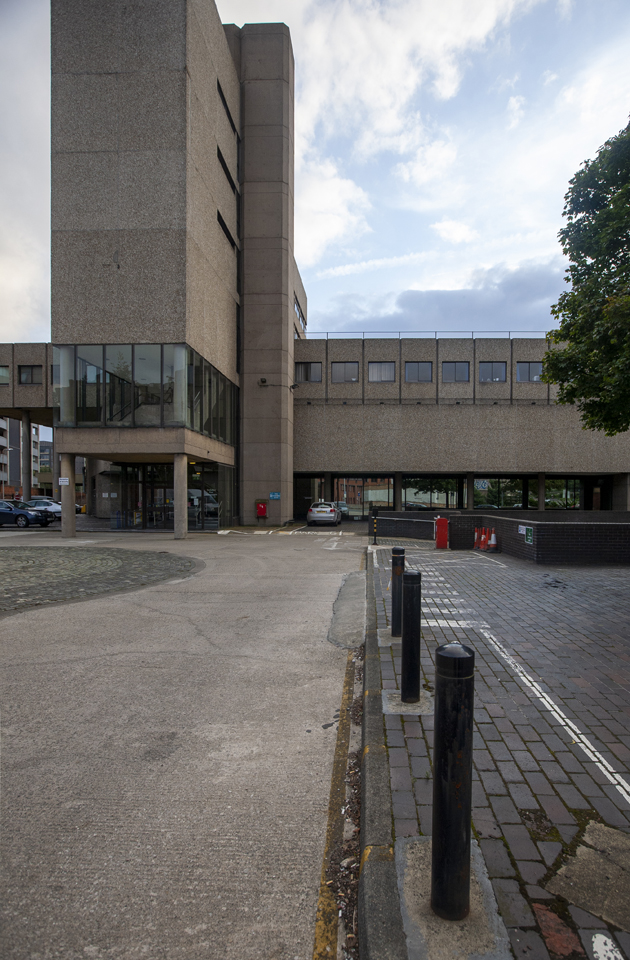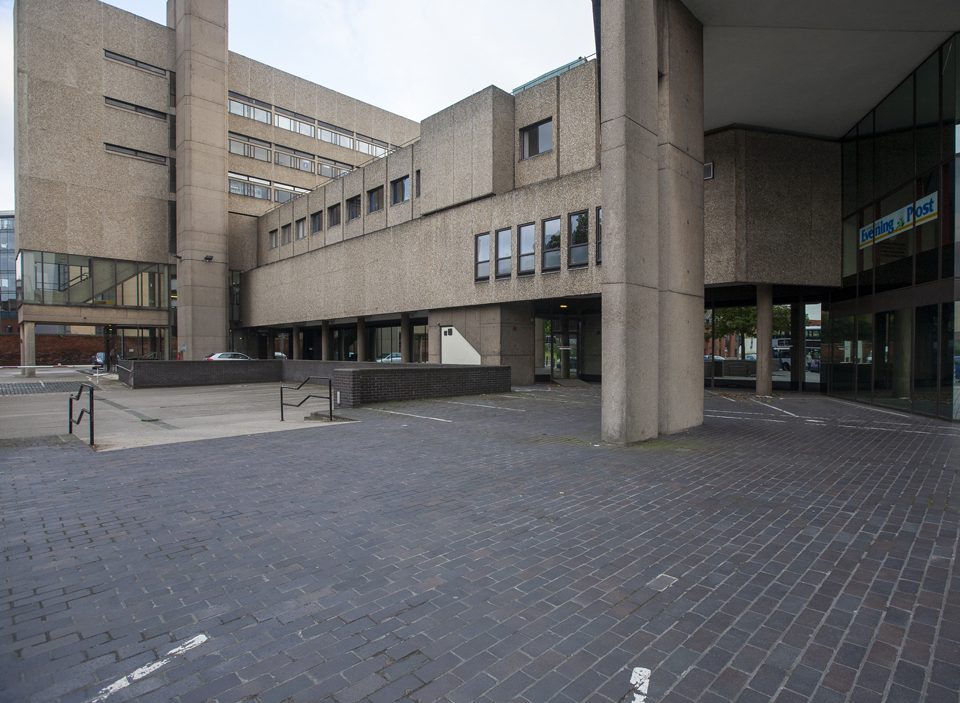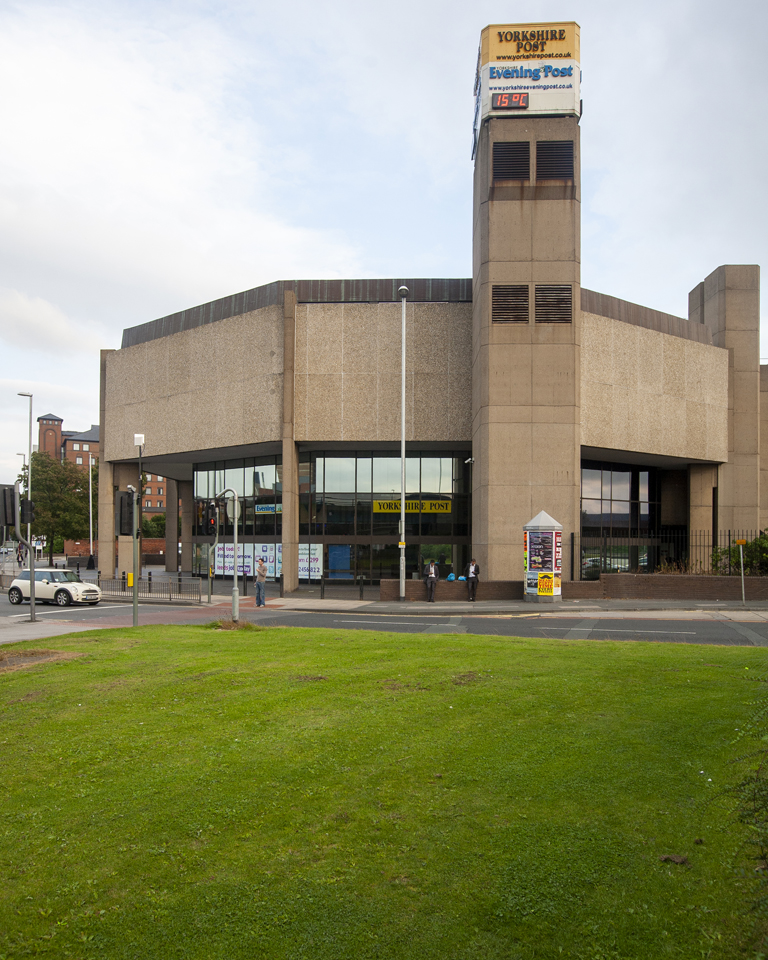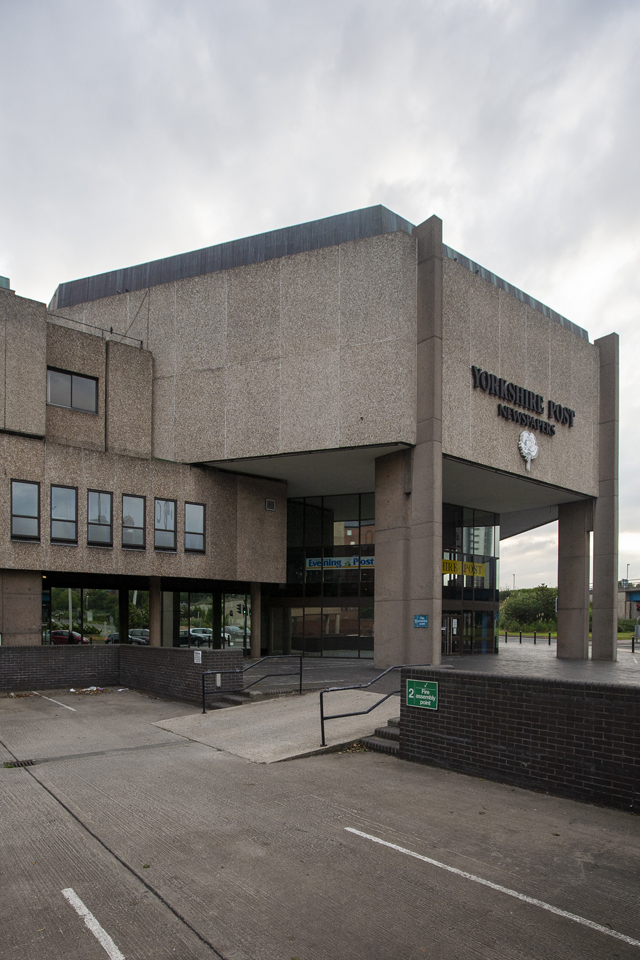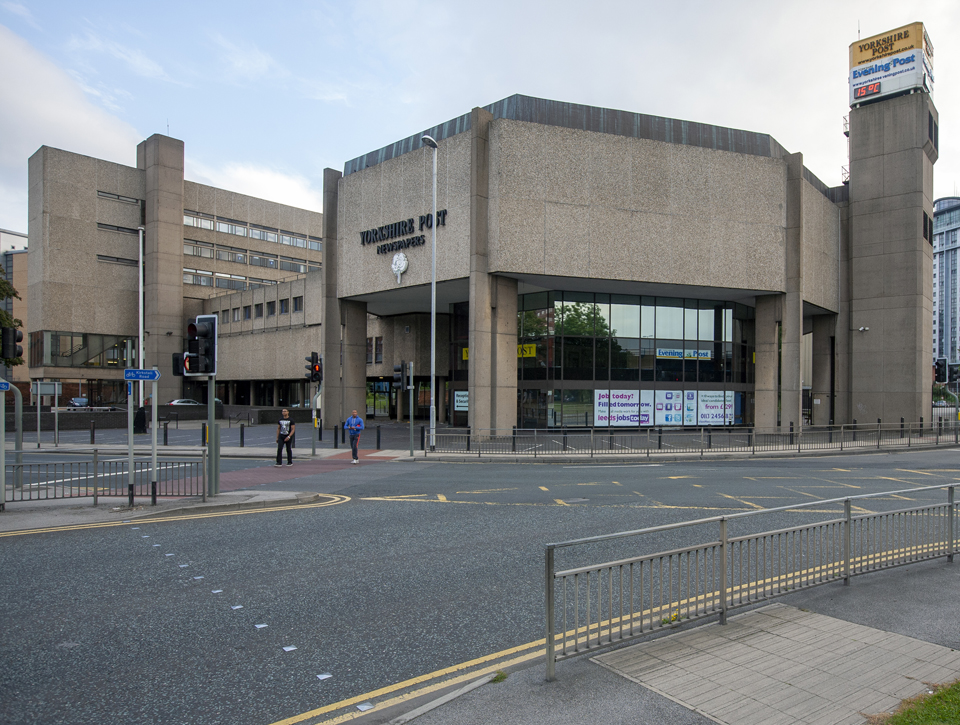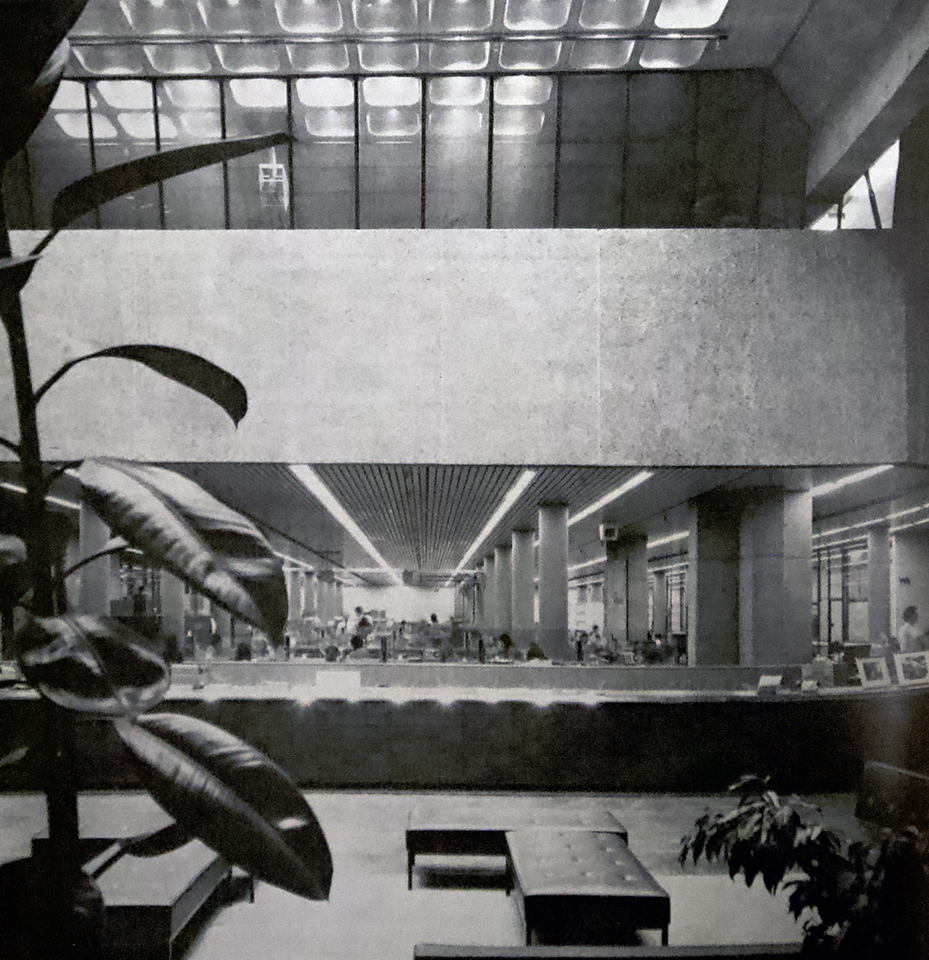Yorkshire Post Building
1970
Demolished with very little fuss in 2014, this more than substantial hunk of late British modernism was award winning in its time. Leeds has steadily chipped away at its modernist architecture - the 1967 International Pool by discredited John Poulson and the Brunswick Building of the former Leeds Polytechnic both fell victim to the wrecking ball in 2009. Such a rejection of modernism feels a million miles away from the Motorway City it branded itself as in the 1970s. The Yorkshire Post Building was designed to sit alongside the urban motorway that would follow its construction and its massing was deliberately composed to be legible from a speeding motor vehicle. The principal parts of the building were expressed as their own volumes - the public reception and gallery was in an octagonal tower and addressed the corner of Wellington Road and the new sliproad; the production hall was low and set behind; and an administrative tower clung on to its eastern end. The eventual proximity of the motorway also made distribution faster and more effective. The John Madin Design Group designed a similar facility for the Birmingham Post and Mail in 1965, so were well versed in the requirements of newspaper production of the period. The Yorkshire Post and the Yorkshire Evening Post were both produced here and the technical demands of receiving raw goods, intricate transports and handling systems were complex. The 4.6 acre site allowed for a horizontal system where all the production processes were on the first floor. This was unique at the time and enabled copy to be in print in half an hour and 200,000 48 page papers to be printed in two hours. The production hall was steel framed with 1.35m deep castellated beams to create a free span. The other parts of the building were concrete framed and the whole ensemble was unified by its concrete cladding, its sandy hue by virtue of the Dorset shingle aggregate. Judges for the RIBA in 1971, including James Gowan, remarked that 'on an awkward site ... surrounded by a changing backcloth of unplanned but almost heroic vigour, the building both by day and by night makes a dramatic contribution. By discarding fashionable vocabulary the architects have created an honest and extremely successful building, efficient in function and fitting supremely well into an unpromising background'. [1] The full design team of Madin, Ramon Wood and Douglas Hickman, in very close collaboration with their client, made a building that expressed its function in its form and this 'blunt honesty' was ultimately its success. Construction began in 1968 and the full building was handed over in September 1970
[1] Yorkshire Architect no.21, 1971, p.460
